Tim Neville ignores the warnings of others and explores Albania's mountains and ancient towns on foot, ultimately discovering a place that feels totally out of this world.
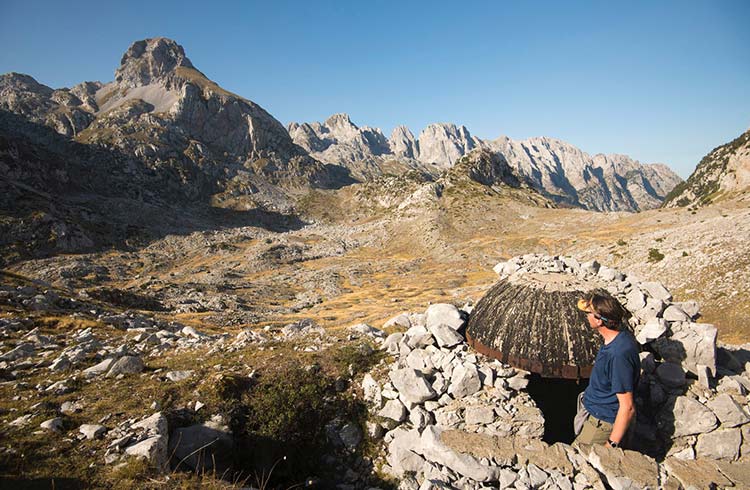 Photo © Tim Neville
Photo © Tim Neville
“Be careful,” the taxi driver warns, his eyes drifting across my backpack. “You cannot trust them. Albanians steal everything.”
I’ve been dropped off on the outskirts of Ulcinj, a 2,500-year-old border town between Montenegro and Albania, from where I plan to explore some of the south of Albania on foot. I’m only carrying what I need for the day, as there are guesthouses and restaurants along the way.
- Albania, the former "North Korea of Europe"
- Adventure in Albania's spectacular mountains and coast
- Trekking the Peak of the Balkans Route
- Day hiking around Gjirokastër
- Trip notes
Albania, the former “North Korea of Europe”
Walking into Albania would have been a terrible idea not so long ago. For years, this country, on the Adriatic between Greece and the former Yugoslavia, was the North Korea of Europe, a brutal land of Orwellian repression where nearly a million machine gun nests dotted a country the size of Belgium. No one in. No one out. Even when Albania finally cracked open in the early 1990s, one of the last Communist holdouts in Europe, it collapsed into lawlessness. Travel books from those days describe it like this:
“It is a land of barbarians.”
“They will murder you and eat you up.”
“They all have knives.”
Adventure in Albania's spectacular mountains and coast
Much has changed in recent years, and those books – though accurate at the time – have aged gracelessly. What was once a no-go zone has become one of Europe’s most electrifying destinations. The country roars with spectacular mountains, twinkling coasts and charming villages where locals are so thrilled to have a foreigner among them it can be difficult to buy your own beer. Restaurants reek of roasted peppers and barbecued goat. Imagine the splendor of the Italian coast or the majesty of the Swiss Alps but at a fraction of the cost – with a fraction of the tourists.
As with most countries, the best way to see Albania is on foot. Some of the most spectacular paths wind through the north, where you’ll find national parks punctuated by towering mountains and quiet, alpine villages. In the south, the land turns drier and the mountains are more sunbaked. Hikes here tend to follow dirt roads between villages where few visitors ever go.
On almost any hike, you’re bound to come across round, concrete machine gun nests and bunkers that Albania’s former dictator Enver Hoxha installed to ease his paranoia about being invaded. Sometimes you’ll come across Roman ruins or an entire Roman road. The area around Nivica, in southern Albania, is just beginning to welcome hikers with new guesthouses and initiatives to help locals turn homes into B&Bs.
Many of the young people speak English, but in the more remote places, it helps to have a guide.

Trekking the Peak of the Balkans Route
A few years ago, I hiked with Samir, a 28-year-old Montenegrin guide, over the 8,000ft (2,438m) Accursed Mountains that rise like limestone fangs east of Ulcinj, and along the border between Albania and Montenegro. A new trail had opened through these mountains, the 120mi (193km) Peak of the Balkans route, and I was there to explore a portion of it.
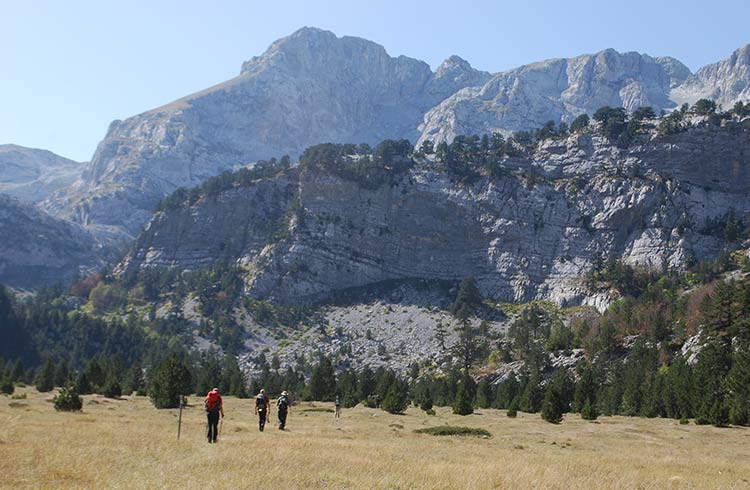
The entire trail wanders through Montenegro, Albania and Kosovo in 10 sections that range from about 8.5mi (13.9km) to 17mi (27.4km) in length. Samir rounded up a truck that took me to a trailhead near Vusanje, Montenegro, for a 13mi (21.35km) hike through Prokletije National Park to Theth, Albania. With no border controls, I needed permission from three police agencies, all of which had been arranged beforehand through a guiding agency. Immediately on entering Albania via a 5,600-foot-high (1,706m) pass, I knew I’d found gold.
Before me lay a rough and spectacular wilderness clawed by some of the most glaciated peaks after the Alps. Rock walls thousands of feet high soared overhead as we wandered through meadows into moody forests filled with endemic pines. The area is home to wolves and bears and broad, U-shaped valleys that bend out of sight. Had this been France I would have shared it with cable cars and countless people. Albania, at least this corner of it, felt like my personal park.
I sat up late in a stone guest house in the village of Theth, a Catholic enclave in a relaxed Muslim country, at the head of the Shala Valley, in northern Albania. The communist elite used to go on retreats here. I chatted by candlelight with an innkeeper who plied me with homemade wine and cheese and strummed songs of yearning on a two-string çifteli.
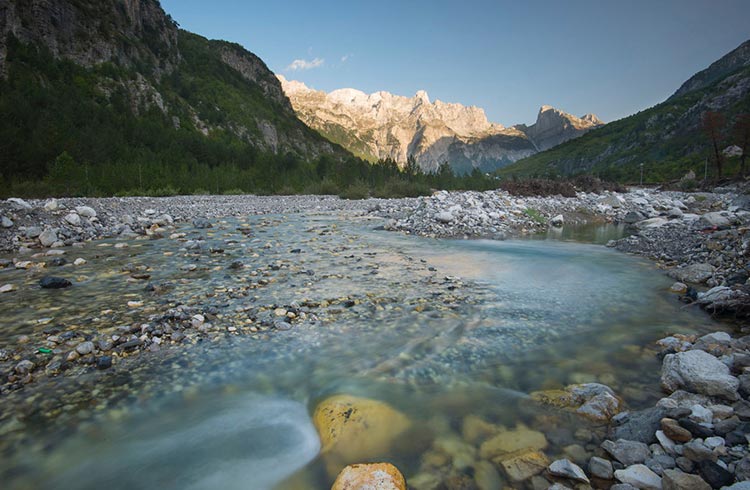
The next day, I hiked about 9mi (14km) on to Valbonë, a village to the east, where the scenario repeated itself; big mountains, lonely trails and a guest house plucked from a fable. I vowed to return.
That trip ended with a bus ride to Dubrovnik, the Croatian city which felt like one giant cruise ship after the raw, authentic beauty of Albania. I couldn’t get the country out of my mind. It was Europe, yes, but unlike any part of Europe I’d ever seen. I had to return, this time to the south.
Day hiking around Gjirokastër
A few days later I hired a taxi from Dubrovnik and headed south to Ulcinj, where I’d arranged to meet Auron Tare, an adventure hiking guide and passionate Albanian. I could have caught rides with various van services or even taken a bus (about US$22/€20 for the 97mi/157km) trip but a taxi would get me back to Albania faster. It’s here, that the driver delivers his outdated warning to me as he drops me off at the border between Montenegro and Albania.
Auron Tare knows what a treasure his country is. He’s a government official in charge of boosting cultural and sustainable tourism but before that he helped Butrint, an Ancient Greek, then Roman, settlement on the Adriatic become Albania’s first UNESCO heritage site. He opened a small adventure company that specializes in hiking and exposing travelers to Albanian culture.
Over the next week, Auron shows me his country. We base ourselves out of Gjirokastër, an ancient Ottoman-influenced town in the Drin River valley, and do day hikes from there. I wander about 6mi (10km) a day, along dusty trade routes past men in felt caps riding donkeys, and linger in the cool anteroom of a teke (a monastery for the mystical Bektashi Order), where a dervish feeds me cigarettes and hooch. I return each night to a basic but pleasing hotel in the city center below the 12th century Gjirokastër Castle. One day, Auron takes me on a hike to the Greek Orthodox village of Saraginisht, where a petite elderly lady asks me to help pick the pomegranates she cannot reach on her tree. I then spend a few hours strolling around the unspoiled ruins of Antigonea, a third century BC Greek settlement.
When it finally comes time to leave Albania, I’m already plotting my return. I don’t know it yet, but I’ll come back four more times over the next four years, each time discovering something new and exciting. I'll kayak past secret submarine tunnels near Palmero and mountain bike near Permet. I'll fish for strange trout in the Vjosa river and raft a canyon no wider than our rafts at points in the dramatic Osumi River canyon. I’ll stay out late drinking coffee and worse on the surprisingly cosmopolitan streets of Tirana. But I’ll have to tell you about those trips another time.
Trip notes
A word on spellings
English translations of Albania places and other words often replace the Albanian “ë” with an English “a” along with other constant shifts. Tirana and Tiranë are indeed the same place.
Flying into Albania
If you can, fly into Tirana and spend a few days exploring the city center. There you’ll find museums, nightlife and cafes. Don’t miss the National History Museum and Bunk’Art gallery. Small inns near the city center can be very affordable. Take a day trip to the mountain town of Krujë, home to an Albanian medieval hero, Skanderbeg.
Sometimes it’s cheaper to fly into Podgorica, the capital of Montenegro, and hire a taxi to take you to the border 16mi (25km) away. From there, you can grab another taxi (or van service) to Shkodër, a good jumping off point for reaching the north of Albania.
Guided hikes
The Peaks of the Balkans Trail runs in a loop between Montenegro, Albania and Kosovo through the more spectacular parts of the Accursed Mountains. Consider hiring a guide. The Via Dinarica, another long-distance trail, also pushes into the north of Albania. Both web pages include information on how to find a guide.
Our Own Expeditions, owned by the Albanian-American team of Auron Tare and his wife, Nancy, can arrange trips for hiking in southern Albania. Otherwise, base yourself out of Gjirokastër, where you can explore the city castle, visit the childhood home of the brutal dictator Enver Hoxha, and explore nearby sites of antiquity. Outdoor Albania, based in Tirana, runs more active trips including whitewater rafting excursions, kayaking and mountain biking.
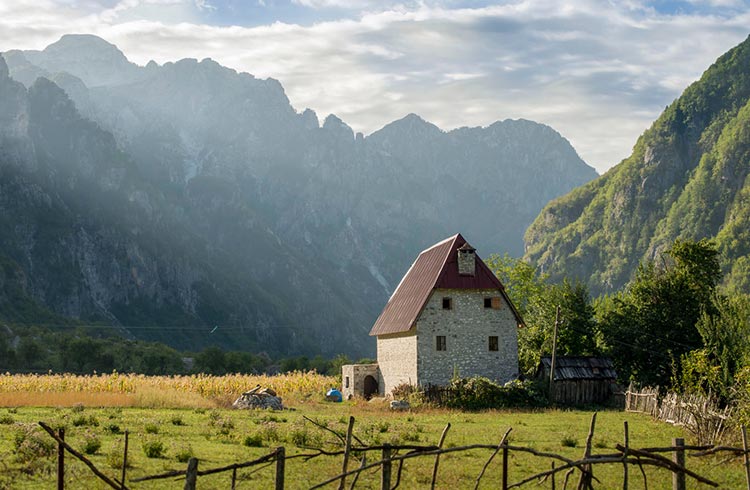
Related articles
Simple and flexible travel insurance
You can buy at home or while traveling, and claim online from anywhere in the world. With 150+ adventure activities covered and 24/7 emergency assistance.
Get a quote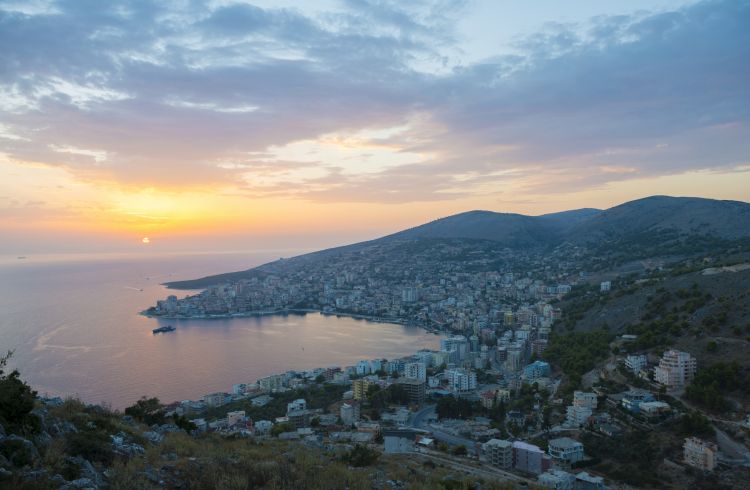
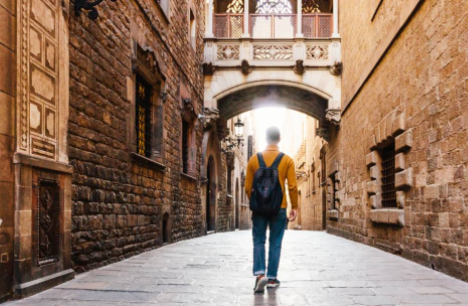
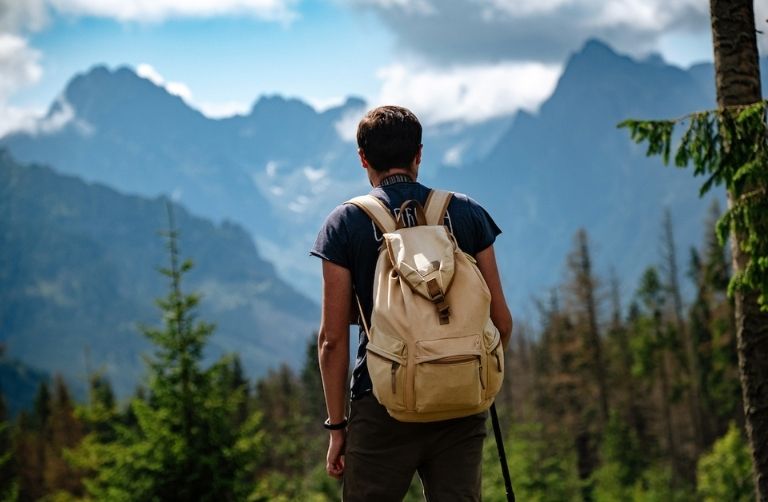
5 Comments
My wife and I spent a delightful 10 days cycling around southern Albania with a tour group (other than the first couple of days when we were on our own in Tirana). We had a great time; good hotels, excellent food, drivers were respectful of cyclists, and we did not feel the slightest whiff of crime, scams, or other things to make us insecure. People were friendly and hospitable, and at pains to tell us that Albanians do not live up their bad reputation - which they know they have. One man told me that there are lot of Albanian criminals, but they have all gone abroad, as it would put their family to shame to be known as a criminal at home. I was impressed with how a country has gone from being the North Korea of Europe to total lawlessness to the appearance at least of normality and democracy, and growing affluence; by their tolerance (not unusual to find mixed Muslim/Christian marriages and cemeteries; and they say they were the only country in Europe to finish World War 2 with more Jews than they started - and this in a predominantly Muslim country!). I was also surprised to meet the only Muslim sommelier I am ever likely to meet. I'm not saying that everything is perfect, but I feel it is wide open, safe, and attractive for visitors and tourism.
what a terrific article that gives me inspiration to look at traveling to a place I had no often considered. With the stiff competition in the travel writing world, it's nice to see a fresh look at a fresh place - kudos to you.
How nice everytime I read something good about Albania. My husband and I have been on a roadtrip for 2 weeks around Albania in 2015. It is truly my best roadtrip ever. Everything that is said in the article is true, and even more than you would imagine. People are so kind, they don't want your money, they're just so happy that you're curious about their country. We've been offered almost everything from a coffee to a meal or even nights in a beautiful guesthouse by the beach at Porto Palermo. Sceneries are one of the most beautiful I've ever seen : mountains, lakes, beaches, villages. It is a very safe country, do not worry about it. Been to Theth, and these moutains are gorgeous. We had so many encounters with locals everywhere in the country. Do not hesitate and visit Albania !
Albania is a great place to visit, there are beautiful mountains, lakes, villages or historical and cultural places you can visit. I'm from Albania and I'm telling you that it is true that Albania didn't have a good relationship with tourists before, but now I bet you will spend a great time in Albania. The prices are not very expensive, there are a lot of choices you can make between going at a beach, mountain, village or experience Tirana's night life (Tirana is Albania's capital city). I promise you that every Albanian you will meet will be nice with you and they will help you as much as they can to secure you a great experience in Albania.
You fail to sufficiently mention the single biggest danger when travelling in Albania (as in all of the Balkans, more or less) - traffic. To be honest, too many people people drive recklessly with little care for risks to themselves, passengers, fellow motorists or cyclists or pedestrians. Especially not cyclists or pedestrians. Add to this a permissive view of drunk driving...
If you’re travelling in Albania you really need to consider this. Take a bus instead of a taxi. Is it possible to rent a car, even with you own driver if you prefer not to drive yourself? If you’re cycling, what roads will you be going on and make sure you’re not out on the road after dark. Maybe avoid Fridays and Saturdays.